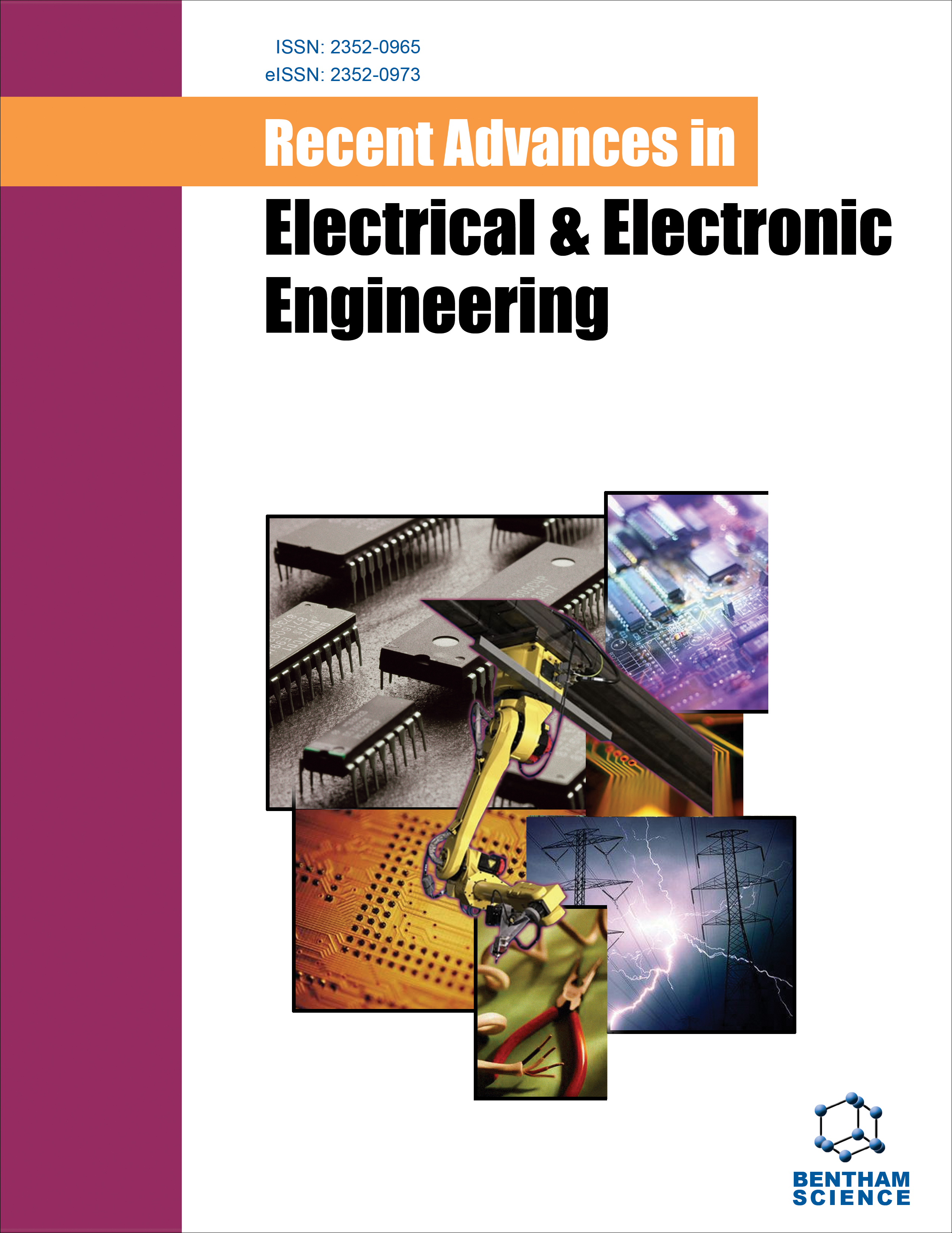- Home
- A-Z Publications
- Recent Advances in Electrical & Electronic Engineering
- Previous Issues
- Volume 16, Issue 1, 2023
Recent Advances in Electrical & Electronic Engineering - Volume 16, Issue 1, 2023
Volume 16, Issue 1, 2023
-
-
PMSM Drives and its Application: An Overview
More LessAuthors: Shweta Singh, S.N. Singh and A.N. TiwariThe Permanent magnet synchronous motor (PMSM) drive has emerged as one of the most preferred motor drives for industrial applications. Its distinguished advantages include high torque density, high efficiency, and vast speed range operation. This paper presents, first, details of PMSM drives and their components. Second, explains the modelling of PMSM. Third, discusses the needs of position sensors, their applications, Read More
-
-
-
Replacement of LVDS to HVDS for Reduction in Distribution Losses, Improvement in Voltage Profiles and Economic Analysis for National Saving
More LessAuthors: Rajeev K. Chauhan, Sanjay Kumar Maurya and Durg Singh ChauhanIntroduction: Rural electrification in India is planned with high-capacity distribution transformers which supply the isolated location loads of various categories like agricultural, household, small business, etc. This distribution system planning with non-optimal distribution transformers leads to poor voltage profiles and high power losses in the distribution network. This paper presents that a High-Voltage Distribution System (HVD Read More
-
-
-
Voltage Regulation Strategy of Distribution Network with Decentralized Wind Power Based on Cluster Partition
More LessAuthors: Shi Su, Jinyong Lei, Yuting Yan, Shuhui Pan, Yang Yang, Hao Bai, Wei Li, Jun Chen and Qindao ZhaoBackground: With the access to large-scale distributed energy, the voltage off-limit problem of the distribution network has become more and more serious, and the traditional centralized voltage control method has been difficult to meet the demand of distribution network control and market development. Methods: In this paper, a voltage regulation strategy based on decentralized wind power clustering is proposed. C Read More
-
-
-
Local Adaptiveness of Mixed Higher Order Partial Differential Equations and ItsApplication in Image Denoising
More LessAuthors: Zengqiang Ma, Hang Yang, Dandan Xu, Weiming Wang and Sasa MaBackground: Image denoising methods based on partial differential equations have attracted much attention due to their "infinite" local adaptation capabilities, high flexibility, and strong mathematical theoretical support. Methods: This paper proposes a mixed higher order partial differential equation denoising model for the step effect caused by the second-order denoising model and the edge blur caused by the fourth-order Read More
-
-
-
Frequency Coordinated Control of Wind Power Flexible Direct System Based on Voltage Sourced Converter Based Multi-Terminal High Voltage Direct Current
More LessAuthors: Congshan Li, Zikai Zhen, Ping He, Yan Liu and Pu ZhongBackground: With the continuous penetration of renewable energy in modern power systems, the problem of excessive frequency deviation of power systems, which is caused by the integration of wind power into electricity grids, needs to be solved urgently. Objective: Make up for frequency fluctuations when AC systems fail, improve the frequency characteristics of main system networks, and reasonably distribute Read More
-
-
-
Logic Circuits Reliability Analysis using Signal Probability and Bayesian Network Concepts
More LessBackground: Reliability analysis of logic circuits has been widely investigated due to increasing fault occurrence in modern integrated circuits. Simulation-based and analytical methods are developed to estimate the reliability of logic circuits. Methods: In this paper, a signal probability-based method is presented to estimate the reliability of logic circuits. In the proposed approach, four signal probabilities (correct 0, correct 1, i Read More
-
-
-
Feature Extraction and Identification of Sugarcane Bud Based on S Component in HSV Model
More LessAuthors: Hongzhen Xu, Qiang Li, Jiaodi Liu and Yulong DuanBackground: Accurate identification and positioning of sugarcane buds is not only the prerequisite for the automatic cutting of sugarcane buds, but also the premise of intelligent directional planting of sugarcane. Objective: In this study, a feature extraction and recognition method for sugarcane buds was proposed based on the S component in HSV model to identify the position of sugarcane bud center in the sugarcane seed ima Read More
-
Most Read This Month
Article
content/journals/raeeng
Journal
10
5
false
en


